[On September 15, 2018 the Unit for Criticism and Interpretive Theory and the School of Art + Design hosted a conversation between Anna Tsing and Ryan Griffis (Art + Design) as a part of the symposium Unnatural Disasters: Climate Change and the Limits of the Knowable. Below is a response by Angela Baldus (Art Education).] Experiments in Collaboration: A Conversation with Anna Tsing and Ryan Griffis Written by Angela Baldus (Art Education) There is something happening in the conversations between difference. Take the prefix co and sit with it for a moment. Feel, in this moment, something happening – coexisting, conspiring, conversing, collecting, and collaborating. Consider this text, counter expectations of what it will be, and the materiality of its becoming. In the basement of the Krannert Art Museum there is a technology enhanced classroom known as KAM62. Here, situated in this place, I will attempt to convey an experience of the conversation between Anna Tsing and Ryan Griffis on Saturday, September 15th, 2018 and all that contributed — human and nonhuman. [caption id="attachment_1834" align="alignnone" width="2500"] Figure 1 : KAM 62, What's on the Screen? Hock E Aye VI Edgar Heap of Birds. Digital collage.[/caption] The image above pictures KAM 62 uninhabited by an audience or presenters. Pay attention to the screen. This screen places us in a landscape, on land granted to the university in 1862 with the signing of the Morrill Land-Grant Colleges Act. The land grant eventually lead to the opening of the University of Illinois in 1868 making it the second oldest land grant public university in the state. The image on the screen documents a site specific public artwork by indigenous artist and scholar Hock E Aye VI Edgar Heap of Birds. The exhibit “Beyond the Chief”, which ran from February 2009 to December of 2009 at various locations around the University of Illinois campus, featured signs naming the Peoria, Piankesaw, Kaskaskiam, Wea, Potawatomi, Ho-Chunk, Odawa, Myaamia, Quapaw, Meskwaki, Sac, and Kickapoo peoples. The university occupies the land of these peoples. The artwork names these peoples, who lived here before and who continue to live, learn, and work on campus. What has and has not changed since is a curious consideration we should critically engage. Ryan Griffis, associate professor and chair of new media at the University of Illinois Urbana-Champaign, continues to present grounds for conversation through the intimate telling of a story. As an artist, scholar, writer, and activist Griffis has worked alone and collaboratively on different projects which explore the political ecology of the midwest. With the artist and activist Sarah Ross, he co-founded Regional Relationships, which encourages artists, writers, and thinkers to engage in projects like their collaborative documentary “A Great Green Desert.” When Griffis begins the story, the screen changes to operate more like a silver screen featuring footage from one the artists’ collaborative projects. Reading aloud to the audience, Griffis provides a narrative to the silent moving image. The place predominantly occupying the screen is Beardstown, Illinois. Images provide evidence that the industrial production of soy is continually creating new landscapes. Griffis explains that the effects have regionally lead to land consolidation, skyrocketing rents, generative means for hog farming, and extract mining. [caption id="attachment_1833" align="alignnone" width="2500"]
Figure 1 : KAM 62, What's on the Screen? Hock E Aye VI Edgar Heap of Birds. Digital collage.[/caption] The image above pictures KAM 62 uninhabited by an audience or presenters. Pay attention to the screen. This screen places us in a landscape, on land granted to the university in 1862 with the signing of the Morrill Land-Grant Colleges Act. The land grant eventually lead to the opening of the University of Illinois in 1868 making it the second oldest land grant public university in the state. The image on the screen documents a site specific public artwork by indigenous artist and scholar Hock E Aye VI Edgar Heap of Birds. The exhibit “Beyond the Chief”, which ran from February 2009 to December of 2009 at various locations around the University of Illinois campus, featured signs naming the Peoria, Piankesaw, Kaskaskiam, Wea, Potawatomi, Ho-Chunk, Odawa, Myaamia, Quapaw, Meskwaki, Sac, and Kickapoo peoples. The university occupies the land of these peoples. The artwork names these peoples, who lived here before and who continue to live, learn, and work on campus. What has and has not changed since is a curious consideration we should critically engage. Ryan Griffis, associate professor and chair of new media at the University of Illinois Urbana-Champaign, continues to present grounds for conversation through the intimate telling of a story. As an artist, scholar, writer, and activist Griffis has worked alone and collaboratively on different projects which explore the political ecology of the midwest. With the artist and activist Sarah Ross, he co-founded Regional Relationships, which encourages artists, writers, and thinkers to engage in projects like their collaborative documentary “A Great Green Desert.” When Griffis begins the story, the screen changes to operate more like a silver screen featuring footage from one the artists’ collaborative projects. Reading aloud to the audience, Griffis provides a narrative to the silent moving image. The place predominantly occupying the screen is Beardstown, Illinois. Images provide evidence that the industrial production of soy is continually creating new landscapes. Griffis explains that the effects have regionally lead to land consolidation, skyrocketing rents, generative means for hog farming, and extract mining. [caption id="attachment_1833" align="alignnone" width="2500"]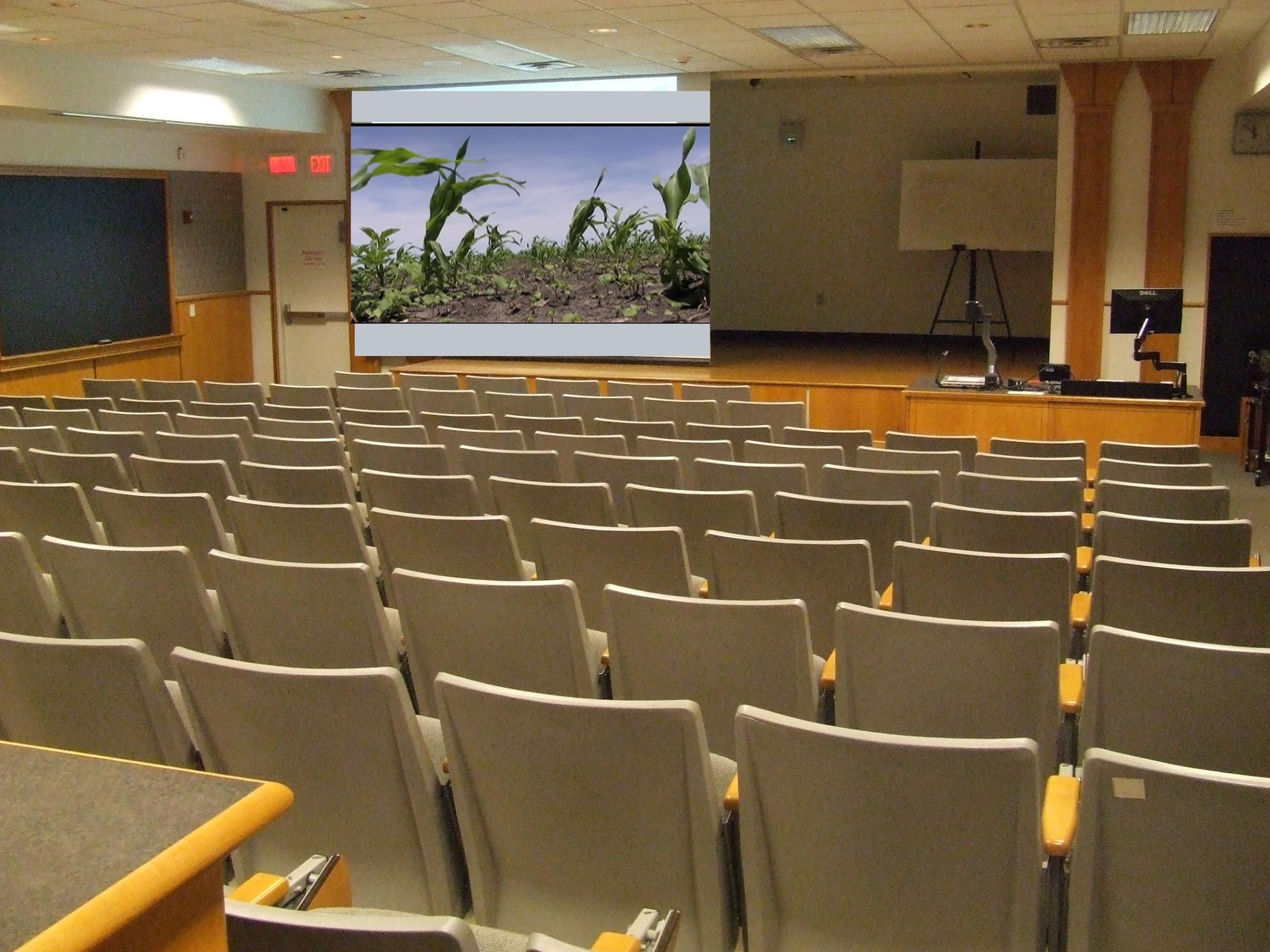 Figure 2: KAM 62, What's on the Screen? Still from collaboration between artists Sarah Ross and Ryan Griffis. Digital collage.[/caption] While (on screen) a lone buffalo slowly traverses the landscape, Griffis recounts an early European settlers’ description of being, “lost in an inland sea” rooting this settlers’ individual experience, one of awe and frustration, a response to the land which situates this settler’s position apart from the things which make and made the landscape before his arrival. By also situating himself as a migrant to the region, Griffis acknowledges his own relationship to these histories. This acknowledgement challenges us to consider the whole process of the land’s becoming. What sits both in and outside of this process? Griffis connects the laboring of the land to the process of collaboration. The soil so fertile for farming became this way by nonhuman collaborators. The major nonhuman collaborator Griffis refers to is the Wisconsin Glacial Period -- the most recent glacial period. What happened in these thousands of years is what is largely responsible for the geography of the midwestern states, especially the formation of the flatlands and rivers. Key nonhuman collaborators here are glaciers, flatlands, rivers, soil, soybeans, and pesticides. [caption id="attachment_1832" align="alignnone" width="2500"]
Figure 2: KAM 62, What's on the Screen? Still from collaboration between artists Sarah Ross and Ryan Griffis. Digital collage.[/caption] While (on screen) a lone buffalo slowly traverses the landscape, Griffis recounts an early European settlers’ description of being, “lost in an inland sea” rooting this settlers’ individual experience, one of awe and frustration, a response to the land which situates this settler’s position apart from the things which make and made the landscape before his arrival. By also situating himself as a migrant to the region, Griffis acknowledges his own relationship to these histories. This acknowledgement challenges us to consider the whole process of the land’s becoming. What sits both in and outside of this process? Griffis connects the laboring of the land to the process of collaboration. The soil so fertile for farming became this way by nonhuman collaborators. The major nonhuman collaborator Griffis refers to is the Wisconsin Glacial Period -- the most recent glacial period. What happened in these thousands of years is what is largely responsible for the geography of the midwestern states, especially the formation of the flatlands and rivers. Key nonhuman collaborators here are glaciers, flatlands, rivers, soil, soybeans, and pesticides. [caption id="attachment_1832" align="alignnone" width="2500"]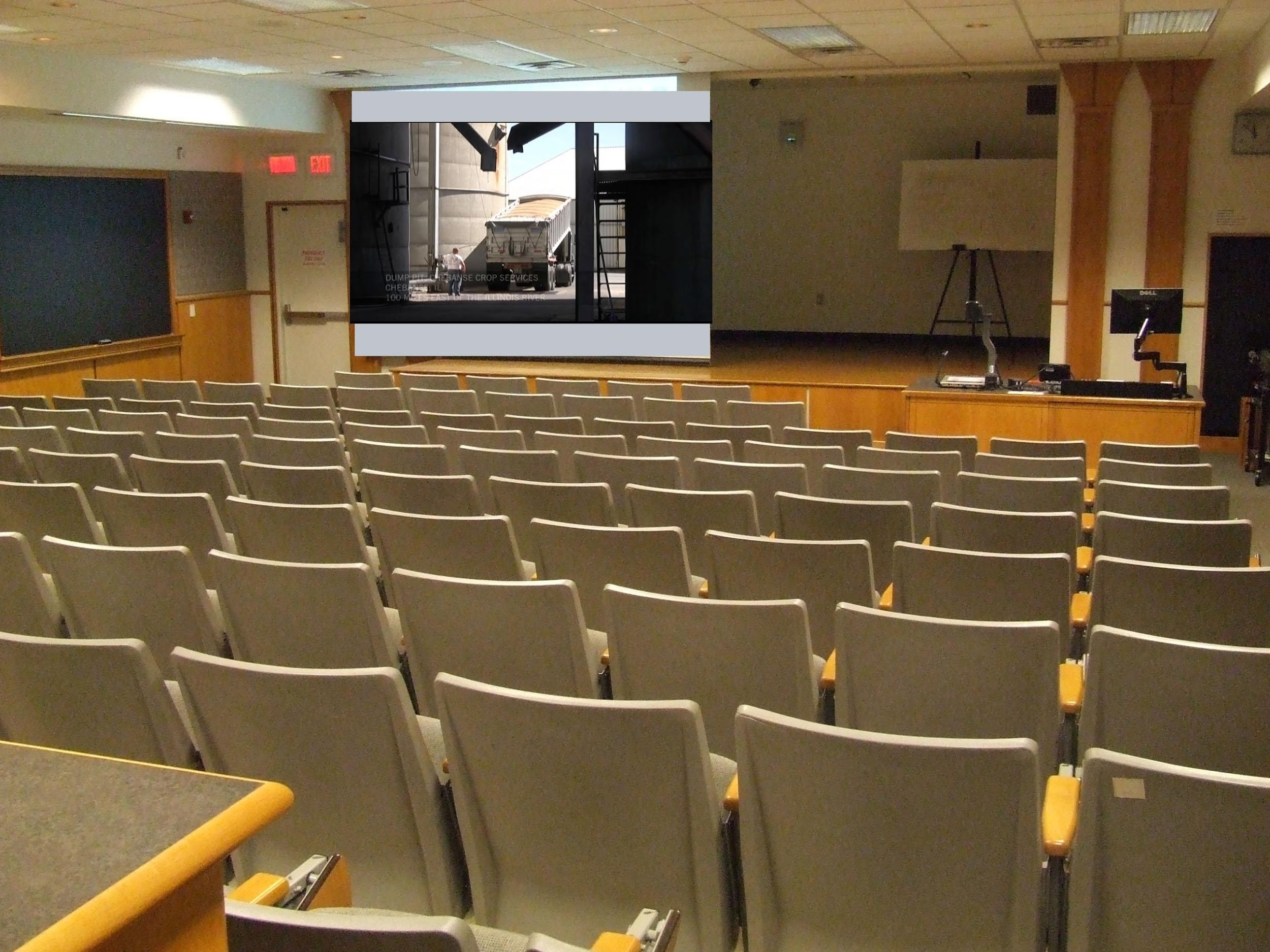 Figure 3: KAM 62, What's on the Screen? Still from collaboration between artists Sarah Ross and Ryan Griffis #2. Digital Collage.[/caption] The story continues in relation to a similar occupation and use of land in Brazil. Griffis draws comparisons between the changing landscapes in the United States and Brazil. The industrialization of farming links both countries to the desired tropical soybean developed to supply crops to China and expand the use of biodiesel. Introducing these bioengineered crops to the landscape introduces new pesticides and nutrients which change and alter what was, threatening indigenous species. Connecting collaboration between industry, land, peoples, art, and science, Griffis offers a context in which to view our possible futures in relation to the past and present. Futures that things nonhuman and human collectively make. Snickers are heard from the audience at the naming of one of these sites where science, food, and resources are capitalized – Ingredion Incorporated. Griffis jokes this place, “sounds like a name for a science fiction evil corporation” which seems opportunely appropriate as these ideas situate the conversation within the possible disasters and mysteries which these things warrant. [caption id="attachment_1831" align="alignnone" width="2500"]
Figure 3: KAM 62, What's on the Screen? Still from collaboration between artists Sarah Ross and Ryan Griffis #2. Digital Collage.[/caption] The story continues in relation to a similar occupation and use of land in Brazil. Griffis draws comparisons between the changing landscapes in the United States and Brazil. The industrialization of farming links both countries to the desired tropical soybean developed to supply crops to China and expand the use of biodiesel. Introducing these bioengineered crops to the landscape introduces new pesticides and nutrients which change and alter what was, threatening indigenous species. Connecting collaboration between industry, land, peoples, art, and science, Griffis offers a context in which to view our possible futures in relation to the past and present. Futures that things nonhuman and human collectively make. Snickers are heard from the audience at the naming of one of these sites where science, food, and resources are capitalized – Ingredion Incorporated. Griffis jokes this place, “sounds like a name for a science fiction evil corporation” which seems opportunely appropriate as these ideas situate the conversation within the possible disasters and mysteries which these things warrant. [caption id="attachment_1831" align="alignnone" width="2500"]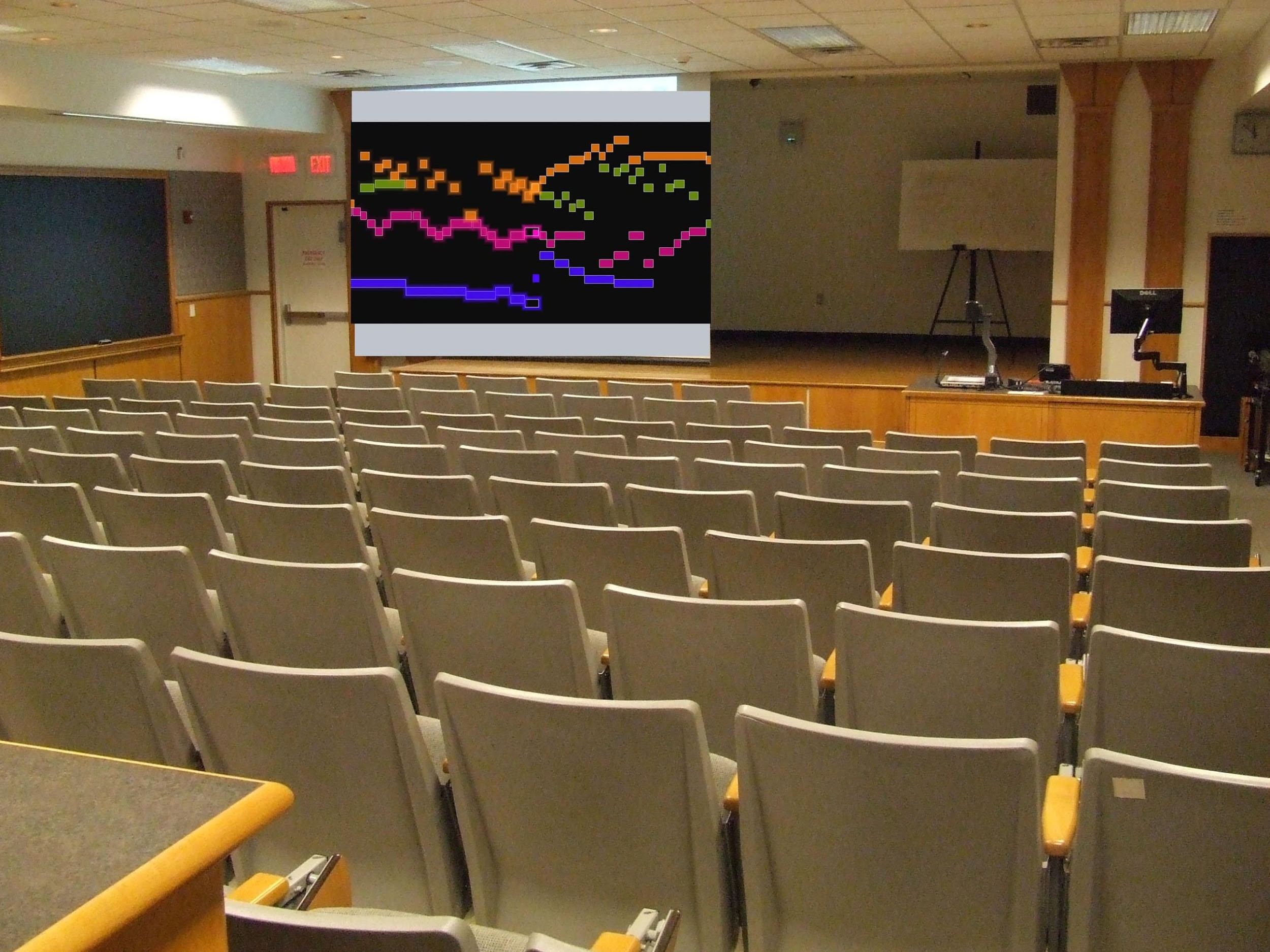 Figure 4: KAM 62, What's on the Screen? Screenshot of Bach, “Great” Fugue in G minor YouTube video. Digital collage.[/caption] After Griffis’s brief presentation, Anna Tsing enters the conversation by saying that if you are going to be in a collaboration, you should take it very seriously. Tsing, is a professor of anthropology at the University of California, Santa Cruz and a Niels Bohrs Professor at Aarhus University in Denmark. Author of books including The Mushroom at the End of the World, Friction: An Ethnography of Global Connection, and In the Realm of the Diamond Queen, and co-editor of several groundbreaking anthologies, Anna Tsing came to campus as a Nicholson Distinguished Visiting Scholar and the honored and celebrated keynote speaker for the Unnatural Disasters: Climate Change and the Limits of the Knowable conference. As a prelude to the conversation between research practices, artists, social scientists, scientists, and the things we study and make, Tsing criticized the science model of collaboration as being not really about collaboration at all, but rather about doing things jointly in a top-down style. In saying this Tsing is not implying that collaboration is impossible between scientists, or scientists and artists, or scientists and social scientists, but rather that it is only possible through dedication to knowing that, “you are going to be changed in the process.” [caption id="attachment_1830" align="alignnone" width="2500"]
Figure 4: KAM 62, What's on the Screen? Screenshot of Bach, “Great” Fugue in G minor YouTube video. Digital collage.[/caption] After Griffis’s brief presentation, Anna Tsing enters the conversation by saying that if you are going to be in a collaboration, you should take it very seriously. Tsing, is a professor of anthropology at the University of California, Santa Cruz and a Niels Bohrs Professor at Aarhus University in Denmark. Author of books including The Mushroom at the End of the World, Friction: An Ethnography of Global Connection, and In the Realm of the Diamond Queen, and co-editor of several groundbreaking anthologies, Anna Tsing came to campus as a Nicholson Distinguished Visiting Scholar and the honored and celebrated keynote speaker for the Unnatural Disasters: Climate Change and the Limits of the Knowable conference. As a prelude to the conversation between research practices, artists, social scientists, scientists, and the things we study and make, Tsing criticized the science model of collaboration as being not really about collaboration at all, but rather about doing things jointly in a top-down style. In saying this Tsing is not implying that collaboration is impossible between scientists, or scientists and artists, or scientists and social scientists, but rather that it is only possible through dedication to knowing that, “you are going to be changed in the process.” [caption id="attachment_1830" align="alignnone" width="2500"]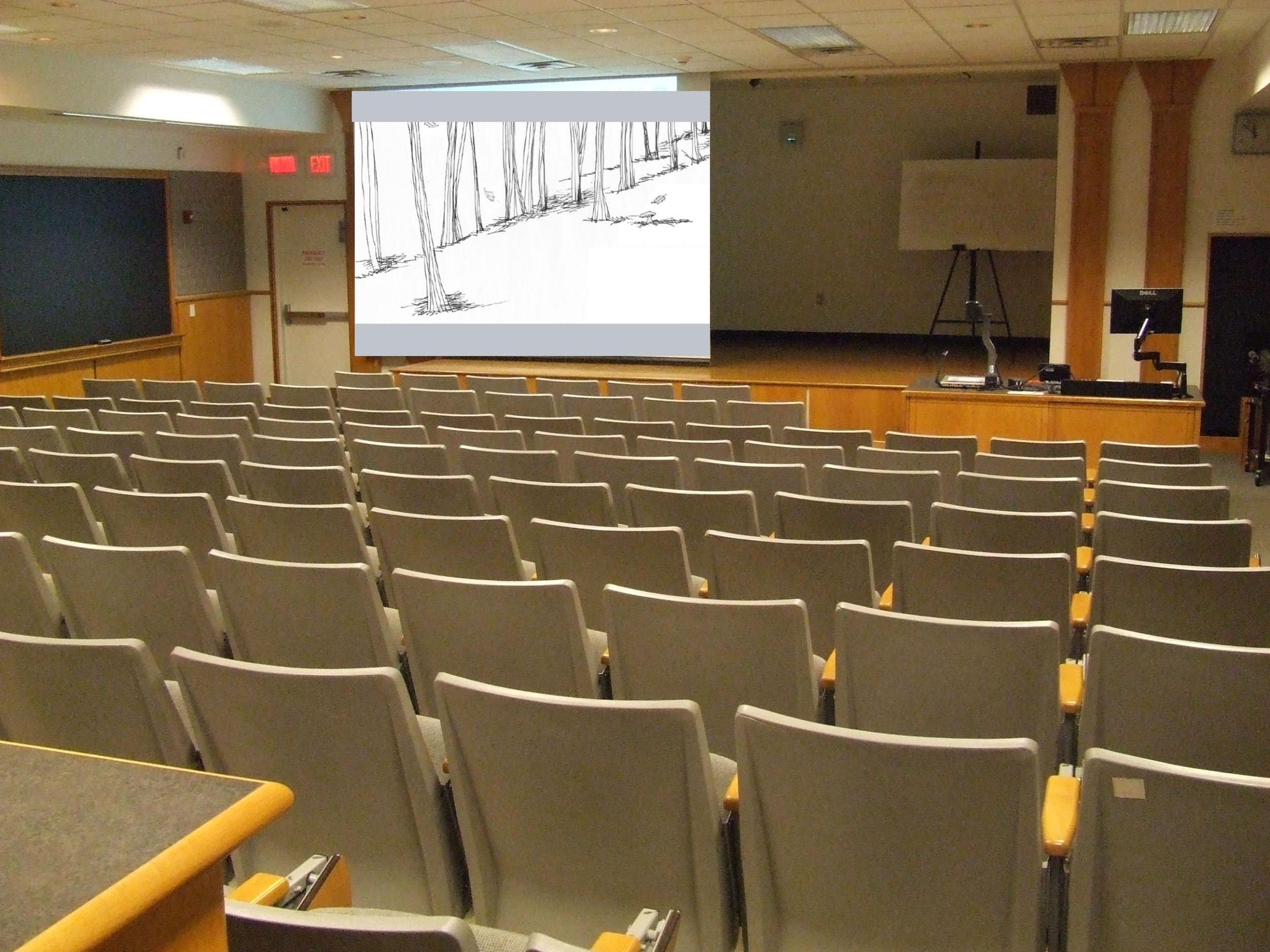 Figure 5: KAM 62 What's on the Screen? Anna Tsing & Elain Gan collaborate with “How Things Hold”. Digital collage.[/caption] Anna Tsing discussed her collaborative piece “How Things Hold,” an article written by Tsing and artist Elian Gan. This work studies participants in an anthropocentric forest in Japan and considers how humans and nonhumans work together in the landscape. As part of their collaborative effort, Tsing proposed using the fugue as an analogy to describe a type of co-composing happening on and with this landscape. This musical composition illustrates the coming together of things, combining one melody and then the next: sometimes there are moments of harmony and at other times, moments of distance. Tsing explains that Gan was not convinced by this analogy and yet that did not lead them to discontinue their work together. The work of collaboration can be done only through an agreement to stay with and struggle through things. Their work resulted from several years of struggling together and figuring out what part of the collaboration is “the thing that cannot be done by the other.” In this becoming, Tsing explains, “the art is in this way functioning differently and together.” Relationally, Tsing shared experiences of teaching graduate students who were brought together by common interests in a subject. Yet, they had completely different expectations for how the class should be and function. These differences call us to question which spaces and methods should be shared. The size of the questions being asked influences the feasible collaborative relationship; and the seeming impossibility of the differences in the size of these questions is what Tsing suggests is the major reason why we have to try and keep on trying when we collaborate. [caption id="attachment_1829" align="alignnone" width="2500"]
Figure 5: KAM 62 What's on the Screen? Anna Tsing & Elain Gan collaborate with “How Things Hold”. Digital collage.[/caption] Anna Tsing discussed her collaborative piece “How Things Hold,” an article written by Tsing and artist Elian Gan. This work studies participants in an anthropocentric forest in Japan and considers how humans and nonhumans work together in the landscape. As part of their collaborative effort, Tsing proposed using the fugue as an analogy to describe a type of co-composing happening on and with this landscape. This musical composition illustrates the coming together of things, combining one melody and then the next: sometimes there are moments of harmony and at other times, moments of distance. Tsing explains that Gan was not convinced by this analogy and yet that did not lead them to discontinue their work together. The work of collaboration can be done only through an agreement to stay with and struggle through things. Their work resulted from several years of struggling together and figuring out what part of the collaboration is “the thing that cannot be done by the other.” In this becoming, Tsing explains, “the art is in this way functioning differently and together.” Relationally, Tsing shared experiences of teaching graduate students who were brought together by common interests in a subject. Yet, they had completely different expectations for how the class should be and function. These differences call us to question which spaces and methods should be shared. The size of the questions being asked influences the feasible collaborative relationship; and the seeming impossibility of the differences in the size of these questions is what Tsing suggests is the major reason why we have to try and keep on trying when we collaborate. [caption id="attachment_1829" align="alignnone" width="2500"]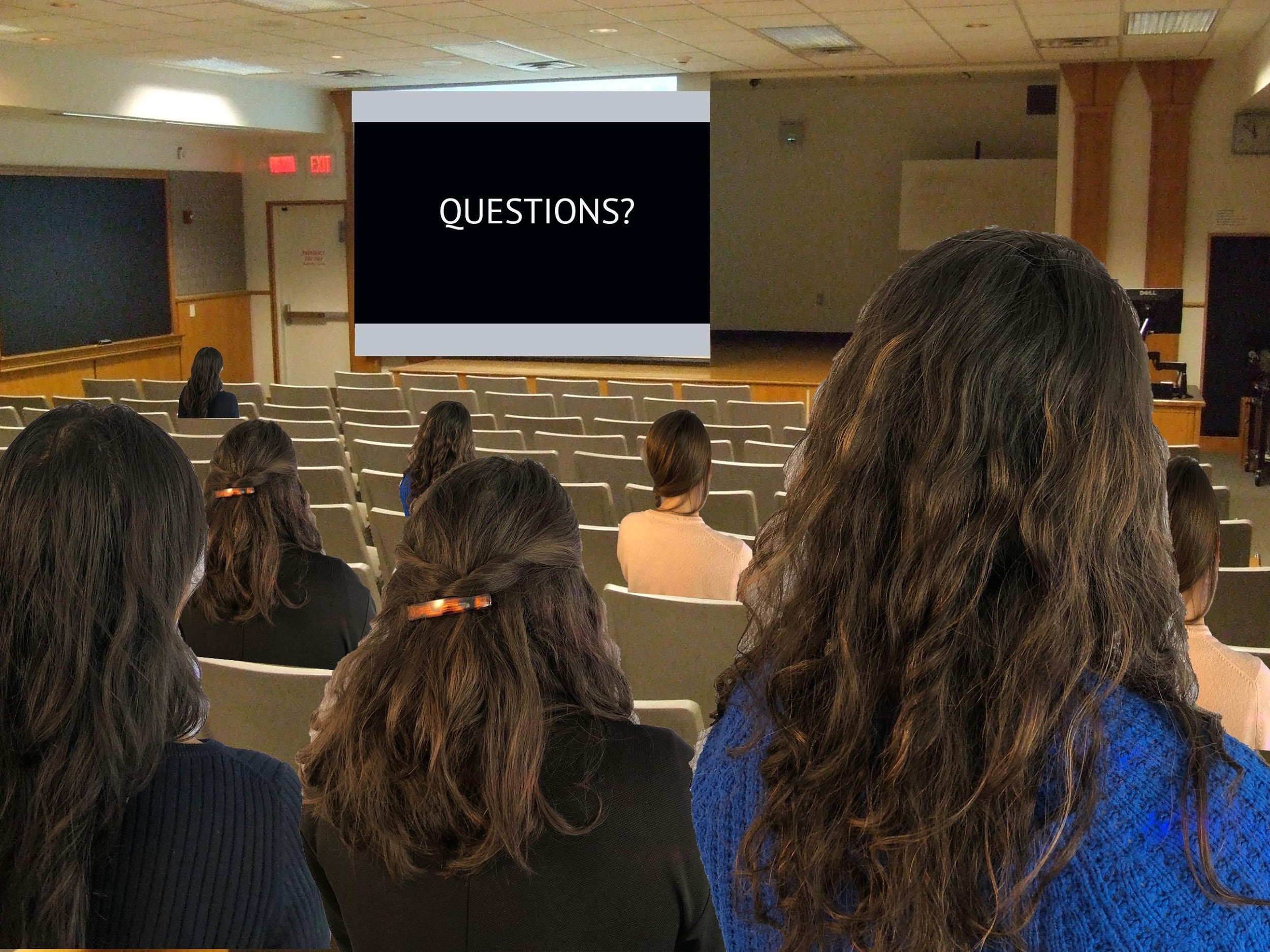 Figure 6: KAM 62 What's on the Screen? Same faces. Digital collage.[/caption] The conversation continued with questions from attendees such as “How do you get farmers to invite you to ride with them on the tractor?” “What methods are used to address the question of objectivity within collaboration?” “What does it mean to push past the sciences and start fixing the world?” and “How do we address the gap between those conversations that happen in academia but are not heard by those making government policies?” Griffis described the process of getting to know the land as being linked to a sort of radical openness and curiosity which his collaborator Sarah Ross comes to with ease. In the same sense that Ross and Griffis were open to sharing the intentions of the project with the people they were interacting with, Tsing expresses the importance of working across and with difference to appreciate the confusing and interesting ways that collaboration can surprise you and prove fruitful. Referencing both her work with Feral Atlas and Leslie Green’s work with chemists and students who with the help of local kayakers took water samples off a desalination plant to discover the water was full of pharmaceuticals, Tsing reminds us of success stories – projects which call for change. In these references, Tsing expresses our need for scientists and social scientists who refuse to go off into philosophy about disaster. Criticism alone does not begin processes of action towards solution. However, Tsing also emphasizes the patchy nature of things. This patchiness is important to the solutions and recognition of the areas where we can make a difference. To Tsing, different kinds of work can be interconnected to recognize similarities between environmental concerns and social justice as exemplified by Rachel Carson’s Silent Spring, which caused a huge shift in the political conversation about pesticides. It is impossible to know when these shifts will occur, but according to Tsing, “we cannot afford to not find out!”. [caption id="attachment_1828" align="alignnone" width="2500"]
Figure 6: KAM 62 What's on the Screen? Same faces. Digital collage.[/caption] The conversation continued with questions from attendees such as “How do you get farmers to invite you to ride with them on the tractor?” “What methods are used to address the question of objectivity within collaboration?” “What does it mean to push past the sciences and start fixing the world?” and “How do we address the gap between those conversations that happen in academia but are not heard by those making government policies?” Griffis described the process of getting to know the land as being linked to a sort of radical openness and curiosity which his collaborator Sarah Ross comes to with ease. In the same sense that Ross and Griffis were open to sharing the intentions of the project with the people they were interacting with, Tsing expresses the importance of working across and with difference to appreciate the confusing and interesting ways that collaboration can surprise you and prove fruitful. Referencing both her work with Feral Atlas and Leslie Green’s work with chemists and students who with the help of local kayakers took water samples off a desalination plant to discover the water was full of pharmaceuticals, Tsing reminds us of success stories – projects which call for change. In these references, Tsing expresses our need for scientists and social scientists who refuse to go off into philosophy about disaster. Criticism alone does not begin processes of action towards solution. However, Tsing also emphasizes the patchy nature of things. This patchiness is important to the solutions and recognition of the areas where we can make a difference. To Tsing, different kinds of work can be interconnected to recognize similarities between environmental concerns and social justice as exemplified by Rachel Carson’s Silent Spring, which caused a huge shift in the political conversation about pesticides. It is impossible to know when these shifts will occur, but according to Tsing, “we cannot afford to not find out!”. [caption id="attachment_1828" align="alignnone" width="2500"]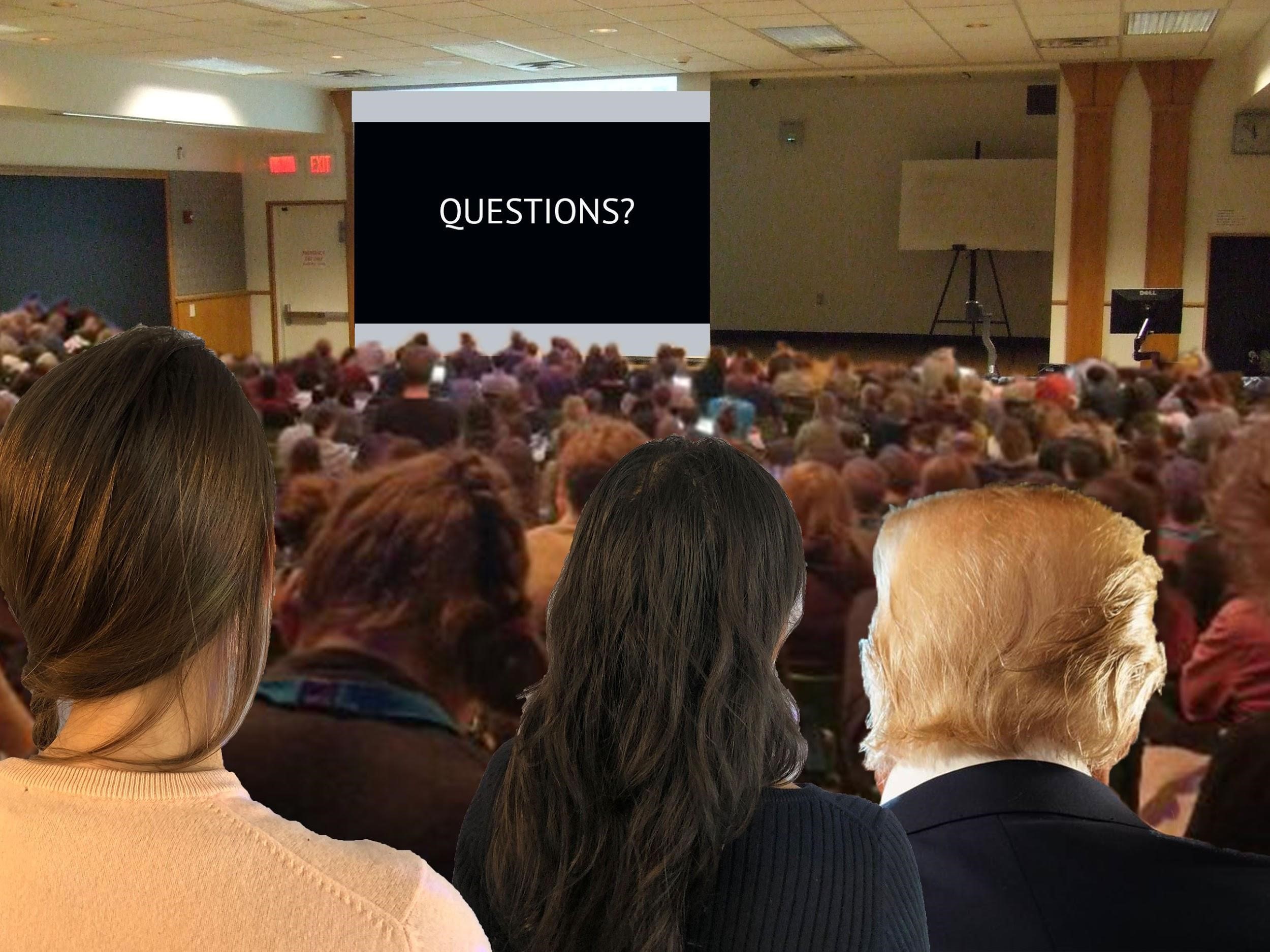 Figure 7: KAM 62 What's on the screen? Seen. Digital collage.[/caption] While this text does not attempt cover the entirety of the conversation which happened, it does strive to synthesize a feeling of being, hearing, and seeing what unfolded. It is important to note the conversation turned to consider how these ideas can be heard beyond KAM 62. How do we echo these ideas in different ways both inside and outside of academia? How do we become a fugue of sorts? In the gap between this place and the next, Tsing and Griffis both express an interest in and a call for making things newsworthy as an important part of creating new imaginaries. These new imaginaries require engagement, reworking, and possibly a certain jutting of narratives, methods, languages, and representations. How does excitement caused by disaster, entangled in both fear and the possible solutions to their happenings, create openings for different fields to collaborate, converse, and reconsider ideas of labor, audience, and action? We need to collaborate within and across the fields. Angela Inez Baldus is an MA candidate in Art Education at the University of Illinois and founder of the collaborative mobile gallery spaced called The Confessional. Digital collages function as text written by Baldus.
Figure 7: KAM 62 What's on the screen? Seen. Digital collage.[/caption] While this text does not attempt cover the entirety of the conversation which happened, it does strive to synthesize a feeling of being, hearing, and seeing what unfolded. It is important to note the conversation turned to consider how these ideas can be heard beyond KAM 62. How do we echo these ideas in different ways both inside and outside of academia? How do we become a fugue of sorts? In the gap between this place and the next, Tsing and Griffis both express an interest in and a call for making things newsworthy as an important part of creating new imaginaries. These new imaginaries require engagement, reworking, and possibly a certain jutting of narratives, methods, languages, and representations. How does excitement caused by disaster, entangled in both fear and the possible solutions to their happenings, create openings for different fields to collaborate, converse, and reconsider ideas of labor, audience, and action? We need to collaborate within and across the fields. Angela Inez Baldus is an MA candidate in Art Education at the University of Illinois and founder of the collaborative mobile gallery spaced called The Confessional. Digital collages function as text written by Baldus.